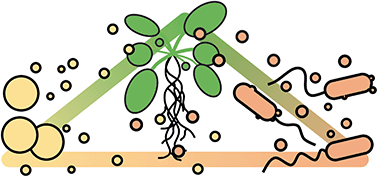Microbial vesicle-mediated communication: convergence to understand interactions within and between domains of life
Abstract
All cells produce extracellular vesicles (EVs). These biological packages contain complex mixtures of molecular cargo and have a variety of functions, including interkingdom communication. Recent discoveries highlight the roles microbial EVs may play in the environment with respect to interactions with plants as well as nutrient cycling. These studies have also identified molecules present within EVs and associated with EV surfaces that contribute to these functions. In parallel, studies of engineered nanomaterials have developed methods to track and model small particle behavior in complex systems and measure the relative importance of various surface features on transport and function. While studies of EV behavior in complex environmental conditions have not yet employed transdisciplinary approaches, it is increasingly clear that expertise from disparate fields will be critical to understand the role of EVs in these systems. Here, we outline how the convergence of biology, soil geochemistry, and colloid science can both develop and address questions surrounding the basic principles governing EV-mediated interkingdom interactions.

- This article is part of the themed collection: Environmental Science: Processes & Impacts: Recent Review Articles


 Please wait while we load your content...
Please wait while we load your content...
